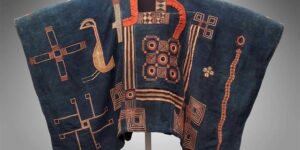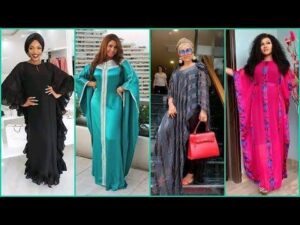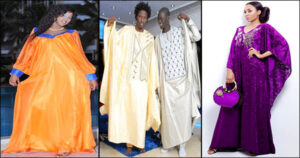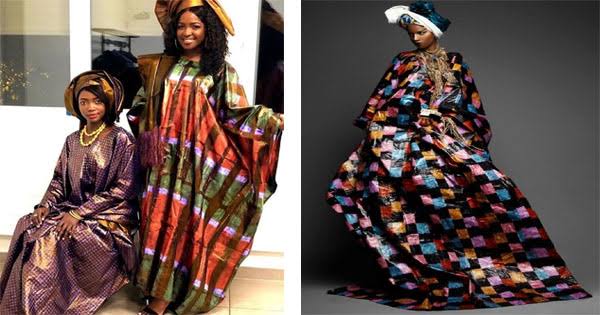The boubou or grand boubou is a flowing wide-sleeved robe worn across West Africa, and to a lesser extent in North Africa, related to the dashiki suit.
The garments and its variations are known by various names in different ethnic groups and languages. It is called agbádá in Yoruba, babban Riga in Hausa, boubou or mbubb in Wolof, k’sa or gandora in Tuareg, Kwayi Bèri in Zarma-Songhai, darra’a in Maghrebi Arabic, grand boubou in various French-speaking West African countries and the English term gown.
The Senegalese boubou, a variation on the grand boubou described below, is also known as the Senegalese kaftan. The female version worn in some communities is also known as a m’boubou or kaftan.

Boubou is usually decorated with intricate embroidery, and is worn on special religious or ceremonial occasions, such as the two Islamic Eid festivals, weddings, funerals or for attending the Mosque for Friday prayer. It has become the formal attire of many countries in West Africa. Older robes have become family heirlooms passed on from father to son and are worn as status symbols.
Also, read; IMF Greenlights $60.7 Million Disbursement to Mozambique
There are female versions of the boubou style in Mali, Senegal, Gambia, Guinea, Niger, Mauritania and many other West African countries.
CLOTHING

Boubou as a full formal attire consists of three pieces of clothing: a pair of tie-up trousers that narrow towards the ankles (known as a ṣòkòtò pronounced “shokoto” in Yoruba), a long-sleeved shirt and a wide, open-stitched sleeveless gown worn over these. The three pieces are generally of the same colour. It is made from cotton and richly embroidered in traditional patterns. Yoruba Agbada comes in different styles including Asooke to Lace and silk and the design is typically distinct from the Babaringa and Grand Boubou.
POPULARITY
Today, Boubou has gained popularity as a fashionable form of attire among wide classes of people in West Africa, the African diaspora, and very recently, even among Bantu people in East, Southern and Central Africa.
Gender differences

Although usually a form of men’s clothing, women’s traditional clothing in much of Sahelian West Africa is of similar construction, though usually worn differently. In some places these are called the m’boubou. In other regions of West Africa, the female formal clothing has been a boubou variant, called a kaftan, and in other places it is the wrapper and headscarf.
By Udousung Deborah Chidinma

